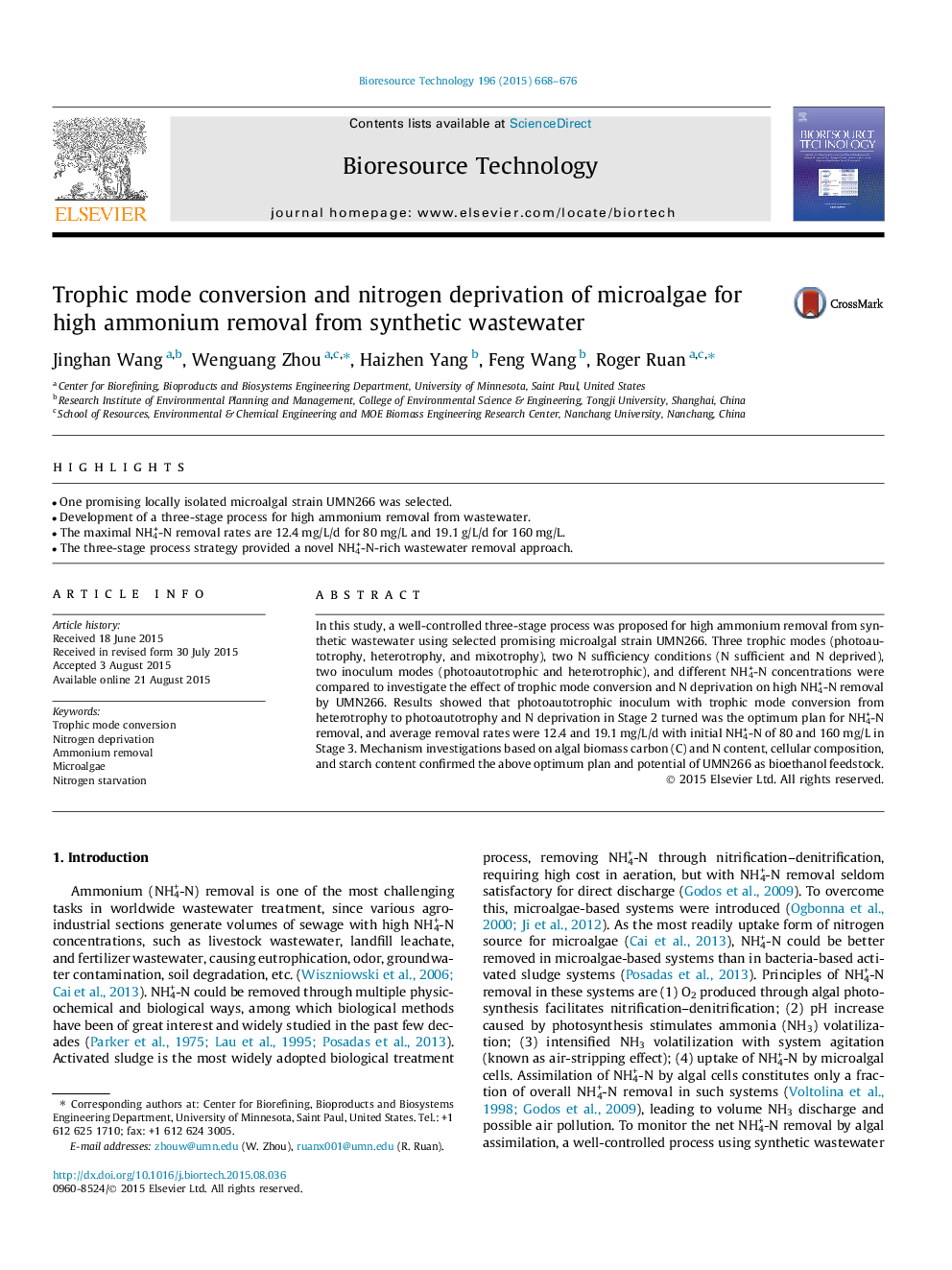| Article ID | Journal | Published Year | Pages | File Type |
|---|---|---|---|---|
| 7073643 | Bioresource Technology | 2015 | 9 Pages |
Abstract
In this study, a well-controlled three-stage process was proposed for high ammonium removal from synthetic wastewater using selected promising microalgal strain UMN266. Three trophic modes (photoautotrophy, heterotrophy, and mixotrophy), two N sufficiency conditions (N sufficient and N deprived), two inoculum modes (photoautotrophic and heterotrophic), and different NH4+-N concentrations were compared to investigate the effect of trophic mode conversion and N deprivation on high NH4+-N removal by UMN266. Results showed that photoautotrophic inoculum with trophic mode conversion from heterotrophy to photoautotrophy and N deprivation in Stage 2 turned was the optimum plan for NH4+-N removal, and average removal rates were 12.4 and 19.1Â mg/L/d with initial NH4+-N of 80 and 160Â mg/L in Stage 3. Mechanism investigations based on algal biomass carbon (C) and N content, cellular composition, and starch content confirmed the above optimum plan and potential of UMN266 as bioethanol feedstock.
Related Topics
Physical Sciences and Engineering
Chemical Engineering
Process Chemistry and Technology
Authors
Jinghan Wang, Wenguang Zhou, Haizhen Yang, Feng Wang, Roger Ruan,
